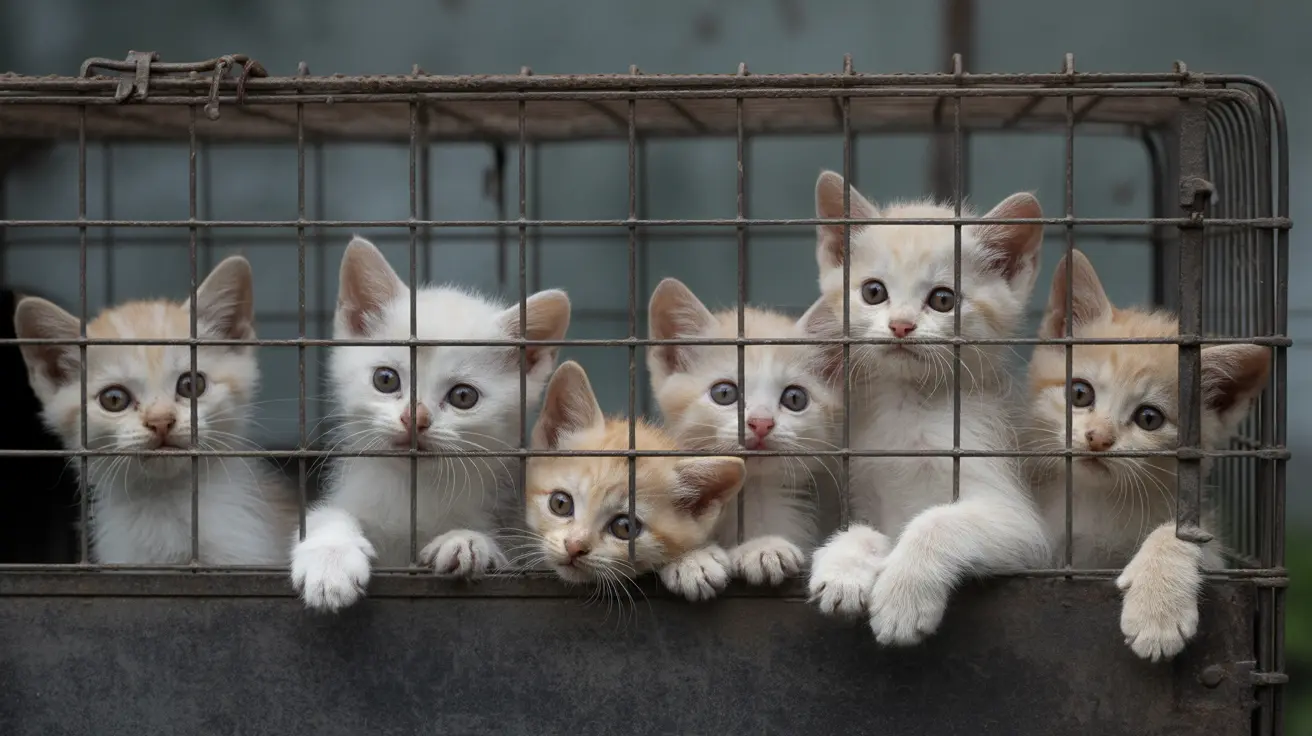How Cats Get Calicivirus: Understanding the Transmission and Prevention
Feline calicivirus (FCV) is a highly contagious virus affecting the upper respiratory tract and mouth of cats. Found worldwide, it is one of the most common causes of respiratory illness in both domestic and exotic felines. Understanding how cats contract calicivirus is crucial for prevention and management.
Virus Characteristics
FCV is a small, non-enveloped, single-stranded RNA virus from the Caliciviridae family. Its genetic variability allows the existence of multiple strains and makes full immunity and vaccine coverage challenging. Particularly notable is its high resistance to disinfectants and its ability to remain infectious on surfaces for up to a month, which significantly increases the risk of indirect transmission.
Modes of Transmission
Cats get infected with calicivirus primarily through:
- Direct contact with an infected or carrier cat, especially via saliva, nasal secretions, or sneezing.
- Indirect contact through contaminated objects like food and water bowls, litter boxes, bedding, toys, or even human hands and clothing.
FCV can also shed in urine and feces, though far less commonly as a primary source of infection. Carrier cats—some of which show no symptoms—can spread the virus continuously for weeks, months, or for life.
High-Risk Environments
The chance of a cat contracting calicivirus increases in certain environments:
- Animal shelters and catteries
- Multicat households
- Breeding facilities
- Places with poor hygiene or overcrowding
Viruses thrive in these conditions, and transmission via shared resources and close contact is frequent.
Risk Factors
- Unvaccinated kittens and young cats are particularly vulnerable.
- Stress lowers immunity, increasing susceptibility.
- New cat introductions pose risk to both the newcomer and resident cats.
Clinical Signs After Infection
Not all infected cats show symptoms. However, common manifestations include:
- Respiratory signs: sneezing, nasal discharge, conjunctivitis
- Oral ulcerations: especially on the tongue, lips, and nose
- Gingivitis and stomatitis: chronic oral inflammation in some cats
- Eye issues: conjunctivitis and discharge
- Lameness: temporary joint pain or limping
- Virulent systemic infection: severe systemic illness with high mortality, rare but serious
Severity often depends on the strain of FCV, stress levels, immune status, and co-infection with other viruses such as feline herpesvirus.
Diagnosis and Treatment
Vets typically diagnose FCV based on clinical signs, especially oral ulcers. Confirmation may involve:
- PCR testing for viral RNA
- Virus isolation
There is no direct antiviral treatment. Symptomatic care includes:
- Hydration and nutrition support
- Pain management
- Antibiotics for secondary bacterial infections
- Nasal decongestion and ophthalmic medications
- Dental cleaning or surgery for chronic oral disease
Prevention Strategies
- Vaccination: Core vaccine for all cats, reducing disease severity and viral shedding.
- Hygiene: Frequent disinfection with bleach-based solutions.
- Isolation: Quarantining new or sick cats for 2–3 weeks.
- Stress reduction: Avoiding overcrowding and unnecessary transitions.
Prognosis
Most cats recover in 1–3 weeks. However, chronic carriers may remain infectious and at risk for conditions like feline chronic gingivostomatitis. Outbreaks involving virulent systemic FCV strains can be deadly, particularly for adult cats.
Zoonotic Risk
Feline calicivirus does not infect humans or non-feline species, making it strictly a feline concern.
Key Takeaways
- Calicivirus spreads via direct and indirect contact.
- Resilient in the environment, FCV requires stringent hygiene to control.
- Vaccination and isolation are critical for prevention.
- Stressful, crowded environments increase infection risk.
- Carrier cats play a major role in the virus’s persistence.
Understanding these transmission pathways allows cat owners to effectively protect their pets and manage this common feline virus.





